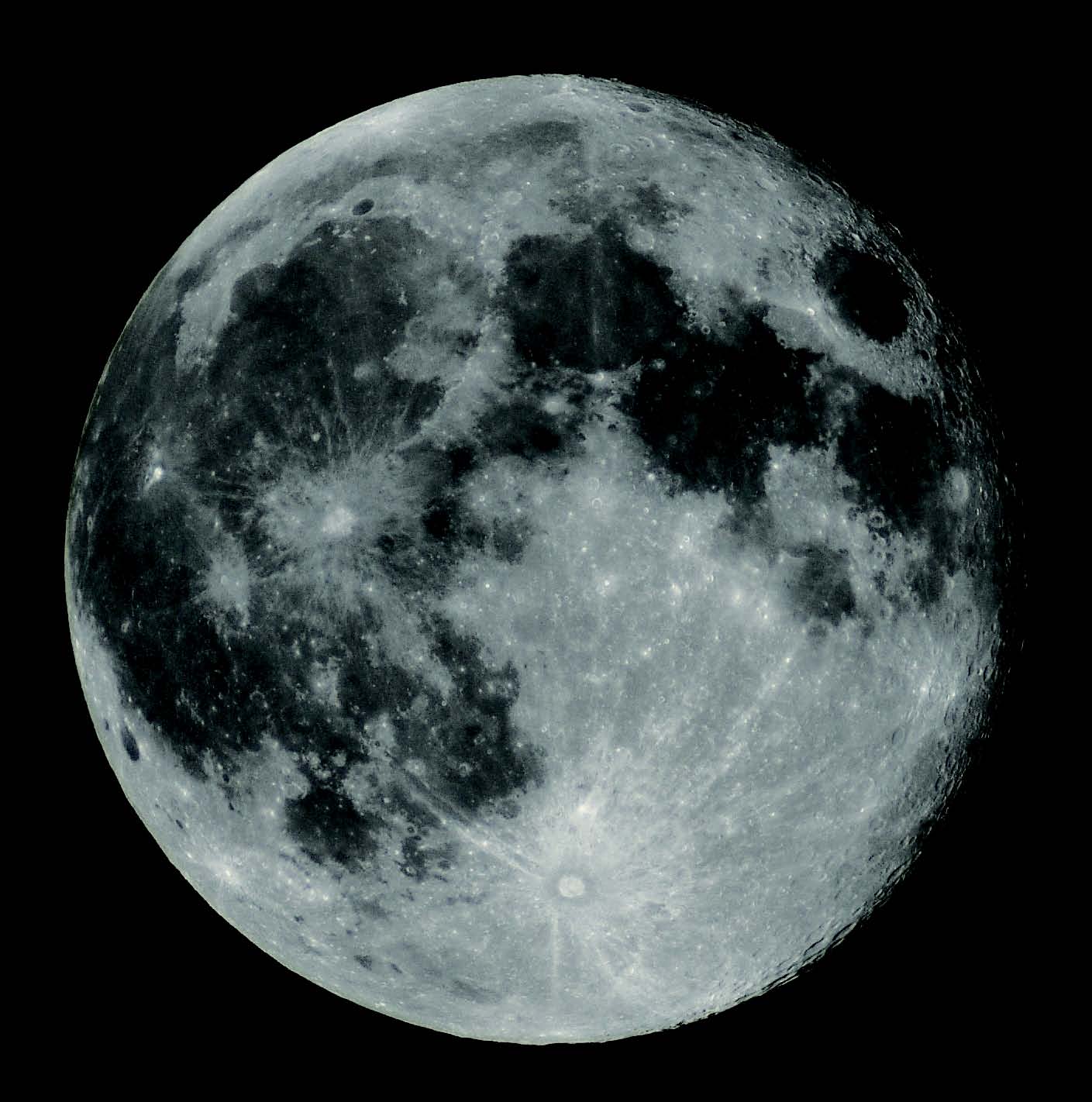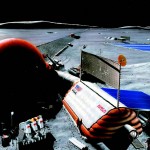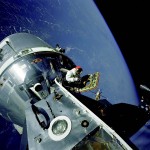by Kieron Cashell
On July 20, 1969, the Apollo 11 moon module sat quietly on the lunar surface, having landed on the moon for the first time in human history only seven hours earlier. Inside, astronauts Neil Armstrong and Edwin ‘Buzz’ Aldrin are told by mission control to “get some rest.” What was going through the minds of Armstrong and Aldrin, having traveled 238,857 miles to a place where no man or woman had ever gone before? Needless to say, no rest for these pioneers was had, and shortly later the order was given for the astronauts to conduct an EVA, or ‘moon walk.’ Those poignant words spoken by Armstrong to the world as he took the last step to the surface of the moon will not soon be forgotten: “That’s one small step for man, one giant leap for mankind.” It was in this moment that President Kennedy’s promise to the American people was fulfilled: before the decade was out, America would have a man on the moon. “No nation which expects to be the leader of other nations can expect to stay behind in this race for space,” Kennedy is quoted as saying.
This year marks the 40th anniversary of this historic event, as well as the 51st anniversary of the birth of NASA, but to most innocent observers the space race has, for all intents and purposes, dried up. Although statistically quite rare, a series of tragic space accidents (notably the Challenger disaster of 1986 and the Columbia incident of 2003) left NASA with a shortage of shuttles and much of the world doubting the importance of manned space missions. Even NASA itself began to question its own priorities, going so far as to ground its shuttle fleet for over two years following the Columbia disaster, in which all seven astronauts on board were killed during re-entry.
But although manned missions to space may make for great entertainment and are usually the most intriguing aspect of space to non-scientists, even unmanned space exploration has greatly affected nearly every facet of our daily lives. Satellite technology has become the cornerstone of global communications, controlling everything from GPS, mobile phones, television, weather monitoring, and even defense and military operations. Currently there are over 8,000 satellites orbiting right over our heads at speeds of up to 18,000 miles per hour, all working hard to bring information that we often take for granted to our very fingertips.
NASA also has a long history of outsourcing the production of technical components used in its spacecraft, as well as fuselage and ground control equipment. This in turn pushes research and development into the private sector, often breeding competition among small companies to come up with new equipment and devices. The ultimate result is exponential advances within a broad range of industries, such as robotics, mining, and microchips. Indeed, without the work done by the various space agencies and the companies that work with them, the super lightweight laptops that we so love would likely not exist.
So is the era of manned missions to space effectively a thing of the past? Can we forget about seeing more astronauts on the moon in our lifetime? Not if NASA and its Russian and Japanese counterparts have anything to say about it.
In January of 2004, former U.S. President George W. Bush announced plans for NASA’s future, dubbed the Vision for Space Exploration. The comprehensive and ambitious program calls for a retiring of the space shuttle fleet by 2010, and manned missions to the moon by 2018, using a new series of planned spacecraft, Ares. Budget constraints and waning public interest has also prompted NASA to set up a series of technology contests and prizes (called Centennial Challenges), in hopes of spurring innovation among the private sector.
This month NASA will launch a moon orbiter, which will be used as a sensing instrument to aid plans for the construction of a moon base during the five years between 2019 and 2024. This moon base, or lunar outpost, will be an experimental and monitoring installation similar to the International Space Station (ISS). The announcement of this plan has kicked off a new space race of sorts—Russia also plans to set up its own permanent moon base, and is already planning manned moon landing missions. The timeframe is slightly behind that of NASA, with completion of the Russian portion of the station planned for 2025.
Japan as well is quickly becoming known as another leader in the new space race, with government spending on aerospace exploration second only to that of the U.S. Koichi Wakata, the first Japanese astronaut to serve in a long-term ISS expedition, made his historic trip into space on March 15 of this year, and is scheduled to return to Earth this month. The Japanese Aerospace Exploration Agency (JAXA) began docking and assembly operations of the first Japanese manned experimental facility in space in March of 2008, and the module, called KIBO, has a scheduled completion date of later this year. Once finished, KIBO, JAXA’s contribution to the ISS, will be 11.2 meters long and have a diameter of 4.4 meters, allowing Japanese astronauts and researchers to work comfortably, within air pressure and composition similar to that of Earth. There will also be an exposed facility, to be used for experiments that require access to the vacuum of space. Like the U.S. and Russia, Japan also has plans in place for a manned lunar landing sometime around the year 2020, leading to an inhabited lunar base by 2030. However, an exact timeline for the project has not yet been confirmed.
Other countries with lunar ambitions include India and China, both of which have successfully completed unmanned missions to the moon. The cold war is far behind us, and most nations with space ambitions have come to realize that working together and sharing information (as well as costs) is the quickest and most strategic way forward.
Setting the moon and the ISS aside, what other space projects can we hope to see realized in our lifetime? On September 28, 2007, then NASA administrator Michael D. Griffin announced aims to put a man on Mars by the year 2037, stating that in 2057, “We should be celebrating 20 years of a man on Mars.” The first high-altitude test flight of NASA’s Ares I-X rocket which will carry astronauts on journeys to the ISS, the moon, and beyond, is scheduled for later this year—if everything goes smoothly, there is no reason that manned missions to Mars couldn’t be possible in the timeframe Griffin suggested. And once humans have stepped foot on Mars, there is literally no end to the possibilities of where we could go next—after all, space is the most infinite frontier imaginable.
External Links:
NASA homepage
JAXA homepage












